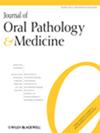Transcriptomic analysis of the submandibular gland under psychological stress condition
Abstract
Background
Psychological stress is associated with changes in salivary flow and composition. However, studies to show the effect of psychological stress on the transcriptome of the salivary gland are limited. This study aims to perform a transcriptomic analysis of the submandibular gland under psychological stress using a chronic restraint stress model of rats.
Methods
Sprague-Dawley rats were divided into stress groups and control groups. Psychological stress was induced in the stress group rats by enclosing them in a plastic tube for 4 h daily over 6 weeks. RNA sequencing was performed on RNA extracted from the submandibular gland. The differentially expressed genes were identified, and the genes of interest were further validated using qRT-PCR, immunofluorescence, and western blot.
Results
A comparison between control and stress groups showed 45 differentially expressed genes. The top five altered genes in RNA sequencing data showed similar gene expression in qRT-PCR validation. The most downregulated gene in the stress group, FosB, was a gene of interest and was further validated for its protein-level expression using immunofluorescence and western blot. The genesets for gene ontology cellular component, molecular function, and KEGG showed that pathways related to ribosome biosynthesis and function were downregulated in the stress group compared to the control.
Conclusion
Psychological stress showed transcriptomic alteration in the submandibular gland. The findings may be important in understanding stress-related oral diseases.

 求助内容:
求助内容: 应助结果提醒方式:
应助结果提醒方式:


